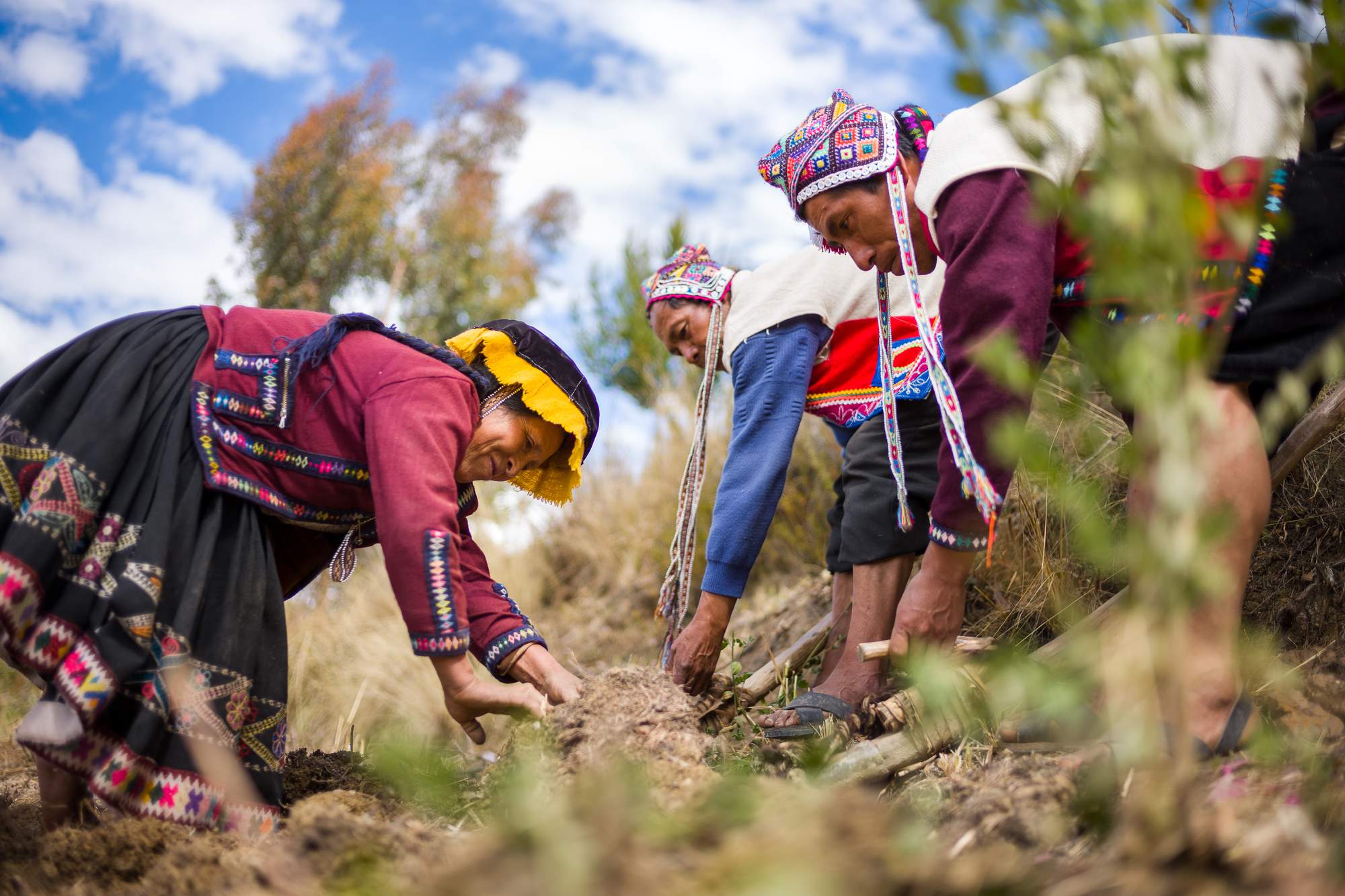Community of Amaru Synopsis – by Matt Dayka
Tucked away high in the mountains above the Sacred Valley of Peru is the small community of Amaru. Home to roughly 160 families, this idyllic village maintains a traditional and authentic Andean way of life. While you will hear some Spanish spoken, the people primarily speak Quechua, the indigenous language of the region.
Agriculture is the primary source of income, and surrounding the scattered homes are a patchwork of fields, growing potatoes, maize, beans and ancient grains. Everything is a communal effort, and the land is still turned by hand with groups of family and neighbors the same tool as their ancestors, the foot plough (chaki taklla), beautiful rows of braided earth are formed for potatoes. Those same potatoes are often cooked in the very same ground they were grown in, using a traditional earthen stove (huatia).
Weaving is also a big part of their lives and livelihood. The entire process from start to finishe is done by hand, using the plants, animals and minerals around them. Yarns are died and spun before being woven into colorful, intricate patterns that only exist in the woman’s mind. This is also a communal event, and women often get together to weave together while chewing coca and talking. Since they are a 45 minute drive from the nearest town, they have started a weaving collective and send their final products to town together, sharing the proceeds.
While the Amaru people love their way of life and don’t want it to change, they are looking for ways to advance themselves while preserving their culture. As such, they have opened up their community to allow tourists a peek into their lives. Small, guided tours allow visitors to not only see and learn about this traditional way of life, they can participate in the activities. Although generally shy people, I was allowed to shoot these images as part of a modest promotional campaign to generate awareness and interest.
Imagine waking early to the sounds of frost evaporating as sun beams kiss each bald leaf good morning. Imagine the sound of a baby suckling at the breast of its mother, with yummy laughter in the distance. This is Amaru, a community that nurtures and encourages journeys of the heart, a community that still huddles around grandmothers in the kitchen to hear stories of the past relived. – Matt Dayka
Personal Experience in the Community of Amaru – by Aspen Mirabal
Fields of tarwi were in full bloom, an early morning awaited me, with a fresh cup of hot mint tea, and a baby with wide, vibrant eyes. My time in Amaru meant food, meant weaving, meant exploring, meant listening to the stories of initiated men and women; those who have become man or women through particular rites of passage in their community. It meant diving deep into my heart as they helped me to pry it open to receive more beauty, more warmth, and above all to regain a perspective of the community I come from. Amaru in its purest form is forgiveness, the people of the land are unconditional love, and I long to be just that.
The people of Amaru are the walking flowers, the weavers of plants, animals, and starry eyes, the givers and receivers of the highlands in the sacred valley of Peru. They honor life in ways I have never seen before, they treat each animal and insect as they do one another, with respect. I honor the community of Amaru because of their values and what they put first in their lives. When I was there, they taught me to appreciate the crip, dark mornings. They taught me how to flirt with young men, and how to embrace my young womanhood.
I admire how they take things so lightly— which is still very hard for me, because I am so serious- they laugh, smile, joke because they are so absolutely open about who they are, how amazing!. With their 300+ varieties of potatoes, they know how to keep an audience entertained with the knowledge they contain. They are solely people of the earth, and they make the best of what they have and love it unconditionally. – Aspen Mirabal

